
Issue #: 203
Published: October / November 2025
- Price per issue - digital : 6.50€Digital magazine
- Price per issue - print : 9.50€Print magazine
- Access to Multihulls World digital archives Digital archives
The Aegean 600 is now one of the great classic races, joining the ranks of those organized by the Royal Ocean Racing Club. Like the famous Fastnet, Middle Sea, and Sydney Hobart races (and more recently the Caribbean 600), this event, which began in 2021, is run on a challenging and attractive 600-mile course. The Aegean had the excellent idea of welcoming multihulls via the MOCRA rating system, so we were able to join in on two hulls!
Last winter, while I was on a delivery trip from Martinique to Cuba, the RORC Caribbean 600 was taking place, in which the ORC 57 #3 Avel Vaez was entered.
At the time, I had teased Yves, the catamaran’s owner, about his multihull’s poor performance, telling him in a slightly pretentious manner that if he needed a crew member to help him race his boat in another race, I was his man... A few weeks later, I received an invitation to come and do the Aegean 600 with him - now I was going to have to live up to my word!
These “600” races combine tactical demands, physical commitment, and breathtaking scenery. Neither too long nor too short, they encapsulate the essence of modern offshore racing: non-stop sailing over several days, decisive weather strategies, key passages to negotiate... enough to appeal to both knowledgeable amateurs and professional crews.
The Aegean 600 is held, as its name suggests, in the Aegean Sea (Greece) every year in early July, a period when the Meltemi is not yet too strong and the probability of encountering rain is close to zero. It’s much nicer to race in a T-shirt than to in serious foul weather gear like on the Fastnet Race in early August, isn’t it?
There were 60 entries for the 2025 edition, including eight multihulls: Allegra, an 84-foot one-off designed by Nigel Irens with a crew of world champions; Picomole, a Rapido 53XS crewed by experienced Italian racers, Baie du Monde 2 - a customized TS52.8, Lynx - an Outremer 4X with a Greek crew, Dakota - a Baramundi 52 designed by Lerouge, Cuordi - an ORC 50, the small IC36 Stellar and, of course, Avel Vaez, our ORC 57.
The ORC 57, a plan by Lombard Design, is the big sistership to the ORC 42 and 50. Originally produced in Lorient, Brittany, by Marsaudon Composites, this model was then taken over and is now manufactured by Grand Large Yachting. The program of Avel Vaez is to sail on charter, as intended by its owner, who already owned a Catana.
The catamaran has been slightly customized: no large glass windows, but a watertight door worthy of the name and an additional seat that allows more people to sit around the cockpit table.
Like all other multihulls in the ORC range, it is a powerful and demanding boat, which requires you to always sail “in front” of the machine, otherwise you risk getting a bit scared at best, and breaking equipment at worst. On the plus side, it can cover incredible distances in 24 hours, and it is a delight to helm this boat with a tiller, while enjoying all the comforts of a large multihull. In its initial design, this catamaran was not intended for racing, so it is not equipped with a large spinnaker or Code 0 - we therefore have to take this into account in our sailing strategy.
Avel Vaez is fairly new, having been launched only 18 months ago, but she has already sailed a long way, as we were to pass the 20,000-mile mark during the race!
For the purposes of the race, the catamaran was lightened considerably: the race organizer provides the competitors with a storage room for equipment at the modern Olympic Marine facilities. The compressor and diving equipment, paddleboards, kitesurfing gear, and all other superfluous equipment have been removed to save weight. This has saved no less than 300 kg (650 lbs)!
There were seven of us on board for the race, a reasonable number. Each person represents extra weight and provisions, so we needed to find a good compromise to ensure we always have “fresh” crew members on deck without being too many.
Yves Nérisson, the owner, is a sporty 50-something who is very experienced at sea, having spent most of his career on oil exploration vessels around the world, and he has a real competitive streak. However, due to his professional commitments, he has not yet had the opportunity to sail on his boat and this was his very first race.
Christian, the skipper since the catamaran was built, is a “young” Breton in his sixties with a somewhat taciturn character and a physique sculpted by years spent at sea. He has already done the ARC and the RORC Caribbean 600 and crossed the Atlantic and the Mediterranean four times with Avel Vaez, so it goes without saying that he knows this multihull inside out, even if he’s not particularly passionate about racing.
Thierry, the first mate, is also a professional sailor. He is no stranger to large vessels, having spent a lot of time sailing on Sunreef catamarans. He regularly skippers a TS42, so he is no stranger to the ORC philosophy and occasionally races in smaller events.
Théo Le Len, a former professional handball player and ORC marketing manager, is joining us to learn more about multihull sailing. His physical fitness and enthusiasm are inversely proportional to his offshore racing experience!
Finally, Yves’ two sons, Joël and Pol, both in their twenties, complete the crew with their good humor and desire to do well.
I complete the team, bringing a little experience to the table while covering the race for Multihulls World. Our crew is quite diverse but highly motivated. There is only one rule: no breaking equipment, as the catamaran has a busy charter season ahead of it after the race.
We were the first to set out from Olympic Marine, to give the crew a little more experience before the start. The weather forecast was lighter than usual for this time of year: the Meltemi was set to be fairly weak for the first two days, with a large windless area north of Milos on Sunday afternoon and a light southwesterly breeze. Fortunately, the multihulls, which are less maneuverable, were the first to start, and would be able to benefit from the Meltemi for longer before the wind died down!
At the start, there was about 15 knots in the race area, with a safety buoy anchored below the Temple of Poseidon, perched high on the cliffs of Sounio: it’s hard to imagine a more beautiful setting for the start of the race for the 60 competitors...
We got off to a reasonable start in the middle of the line to avoid being blown off course by the impressive sail plan of Allegra, and we crossed the safety mark in third position after being overtaken by the Rapido, which seemed particularly fast upwind in the breeze. We bore away and then took a course slightly higher than the route to Milos. When the weather is uncertain, a tactic that works well is to sail to the best CMG (Course Made Good): the CMG is the projection of the boat’s speed vector onto the route. It doesn’t matter if we’re sailing 15° off course if the catamaran is going 30% faster.
In the early evening, the wind began to drop and we could see the big monohulls catching up with us. By 8 p.m., the wind died completely and we were literally stopped in the water.
We spent the night in calm conditions, playing with the few puffs of wind that managed to get us past the islet of Anti Milos before falling back into flat calm until mid-morning. First observation: as soon as the wind drops below 5 knots, without Code 0, we were stuck on the “racetrack”! Numerous monohulls passed us. Cuordi, the ORC 50, caught up with us as they passed close to Milos Island, and the other multihulls that we had left behind the day before were back in contact. In 24 hours, we had barely covered 80 miles, and some of the more optimistic crew members were now starting to worry about their flights home.
The wind settled at around 12 knots from the southwest, and we hoisted the gennaker, on a broad reach. Our second observation was that, with less than 18 knots of true wind and no spinnaker, our VMG wasn’t great and our competitors were catching up quickly.
In the early evening, we finally approached the island of Santorini and were about ten miles behind the ORC 50, which was in third place.
In the warm evening breeze, the ochre rock of the volcanic cliffs glowed in the last rays of the sun, while the white houses of Oia gradually lit up, suspended above the void like an offering to the Aegean Sea – there you have it, my three lines of poetry... On board, the silence was broken only by the creaking of the winches and the sound of the waves lapping discreetly against the hulls.
This suspended moment, of almost unreal beauty, reveals the true spirit of the Aegean 600: a fierce competition interspersed with moments of grace.
As soon as the sun set, the wind dropped completely and we found ourselves battling with a dozen monohulls, close-hauled in the calm. We sailed around the islet of Néa Kameini, match racing with our competitors. As soon as the wind picked up to around ten knots, we increased in speed, our daggerboards improving our performance, and we closed the gap to just two miles behind Cuordi. The battle was far from over!
We spent the early part of the night catching up with the fleet under gennaker, but unfortunately the wind quickly dropped below 15 knots and we were forced to head up to maintain a decent speed and VMG.
In the early morning, we got to admire the cliffs of Crete with once again breathtaking scenery and colors. We were forced to gybe several times to pass the southernmost point of the course, the island of Kos. The price for this was quite high because all our friends under spinnaker were benefiting from a better downwind compromise... we were having to start all over again!
Fortunately, we caught up with the fleet, which was completely tangled up under Kos. After a short while, we managed to catch a gust of wind by playing “in the rebound” of the cliff and for more than half an hour, under full mainsail and genoa, we make a run at an average speed of over 20 knots with steady peaks of 25 knots. The powerful catamaran is disconcertingly easy to handle at these speeds - sitting comfortably in the helm seat, I treated myself to a real sailing session. The leeward daggerboard whistled, and I played with the wind angle to really get the catamaran going and maintain as steady a speed as possible. The crew had their hands on the sheets in case of being overloaded, but we had so much power that we didn’t need to ease off much. Our competitors, who had been right next to us, disappeared behind, beyond the horizon, and smiles returned to the faces of some of the crew members who were getting bored of the calm.
Unfortunately, another wind hole, even bigger than the previous one, awaited us downwind of Karpathos. We looked at the AIS to see where the boats ahead of us had gone - some tried to get out of it by diving south, others were suffering to the northeast. Although the southern option appeared attractive because the direction of the swell would allow us to be a little faster, it would have kept us in the wind shadow: the way out was therefore to the east, so we had to accept the suffering and take advantage of the slightest gusts to gain meter by meter in the Karpathos Strait. The TS52.2 Baie du Monde II, which an hour earlier had been six miles behind us, is now only 100 meters (330 feet) away... the smiles began to fade again.
Through sheer determination, we finally caught up with a Pogo 50 skippered by Michalis Aftias, a regular in the race, and a gust of northerly wind allowed us to make rapid progress eastward and pick up speed again. The wind filled in, settling at around 18 knots. I negotiated a little with Christian and we decided to hoist at least the masthead gennaker, and our crazy ride resumed with speeds again reaching twenty knots... and our competitors disappearing. In fact, our friends on Cuordi, forced by timing issues, had to throw in the towel when they were just a stone’s throw ahead of us.
Night fell before we reached Rhodes and its wind shadows, and everyone on board wondered what fate had in store for us...
For once, the leeward passage, in a night lit by a nearly full moon, went rather well for us. Christian and Thierry did a great job while I caught up on some sleep, and in the early morning, we crossed the Strait of Rhodes close-hauled with a magnificent view of the cliffs of Turkey.
The weather forecast was again quite changeable, with a large area of calm around the island of Kos for the night. We were going to have to hang on if we wanted to finally capitalize on our lead over our opponents.
By the early afternoon, there was only 5 knots of wind and we were tacking towards Kandelioussa. Steering in the blazing sun is demanding work and we took turns often as it was difficult to stay focused for long.
We passed the islet in the late afternoon, once again closely followed by a horde of monohulls. We hoisted the gennaker again to slide downwind of Kos and quickly picked up some speed. We played the wind, gybing repeatedly in a fairly narrow wind window, but this allowed us to cover the ten miles separating us from the Strait of Bodrum. When we arrived east of Kos, night had fallen... and so had the wind!
Not a breath of air, the quiet of the night was disturbed by the boom-boom of a nightclub on a beach in Kos, and I was almost forced to stop young Théo from jumping into the water to join the party. Around 1:00 a.m., all our competitors returned, and we made our fourth start. Théo and I battled against two monohulls, trying to find some wind to get out of this trap, and finally caught a light westerly breeze... which died down after two hours, just as Christian took the helm. Good luck, Captain!
In the early morning, the view of Gulluck Bay was magnificent, with a little mist skirting the base of the hills. The fleet set off again in a small group in a light breeze. We weren’t going fast, though we were treated to some spectacular views.
We finally found some wind again after tacking for part of the morning to round Agathonisi Island. And this time it was strong, so we quickly had to put the second reef in and hoist the staysail. At 60° to the true wind, in rough seas, the ORC 57 is a real war machine and our competitors disappeared over the horizon for the umpteenth time.
We had a bit of a scare when we fell into a wind shadow at the southwestern tip of Ikaria Island, but within half an hour, with the crew focused on the maneuvers, we were off again. Thierry had fun at the helm, reaching speeds of 20 knots as we were in the approaches to Mykonos. We passed close to yachts moored near the southern beaches of the island. The sun was about to set and the light was magnificent. Only the presence of an airfield and its private jets dissuaded me from launching my drone to capture the scene!
We had once again gained 25 miles on our competitors and were beginning to feel more confident about our chances of finishing. We sailed close-hauled between Mykonos and Dilos - the forecast predicted zero wind between us and the finish line until 7 a.m. Our brains started whirring to come up with a strategy: either we push through by tacking under Gyaros Island and trying to make the fastest possible progress towards the finish line, praying that we’ll get through, or we try to play it safe under Ofiousa Island, where we sense there are some nice gusts coming in. We didn’t have much to lose, so we unanimously decided to go for the second option and sailed at 9 knots on a course parallel to the island for two hours.
As we passed the strait between Androu and Tinou, we decided to aim north of Kea and the finish line. We encountered two more calm areas before passing Kea, less than ten miles from the Temple of Poseidon. Our opponents were still 15 miles behind, and things were starting to look good! We slipped through the water under gennaker in the warm night until the wind dropped completely again just a few miles short of the line. Five miles out, we were only doing five knots—three miles out, three knots. At daybreak, we spotted the two buoys marking the finish line beneath the cliffs on a completely glassy sea. Behind us, as we passed the tip of Makronisos, a multitude of small sails were closing in. Fatigue was beginning to set in among the crew, but everyone was motivated to finish well, and we managed to cross the finish line on our momentum and positive thoughts! Literally 30 seconds after we finished, a breeze suddenly picked up to 15 knots—we were all a little stunned by the timing of it. Just our luck!
What a race! We finished third in real time and fifth in corrected time – thanks to the calm at the finish line. But the 2025 Aegean 600 will remain an unforgettable memory for the entire crew.
Everyone on board performed well, despite their varying levels of experience. Joël and Pol kept their watches, took part in all the maneuvers and also did their bit in the galley, Théo made up for his inexperience with his physical fitness, and Yves, as owner, managed the inevitable arbitration between Christian and me on where to strike the balance between safety and performance, and always in good spirits.
To do better (next year?), we will need to pay a little more attention to the transitions with a more suitable wardrobe (large spinnaker and Code 0) while adopting a slightly more “racing” mode.
Ironically, Yves realized after the finish that our MOCRA rating included the big spinnaker... so with the corrected rating, we could have finished on the podium!
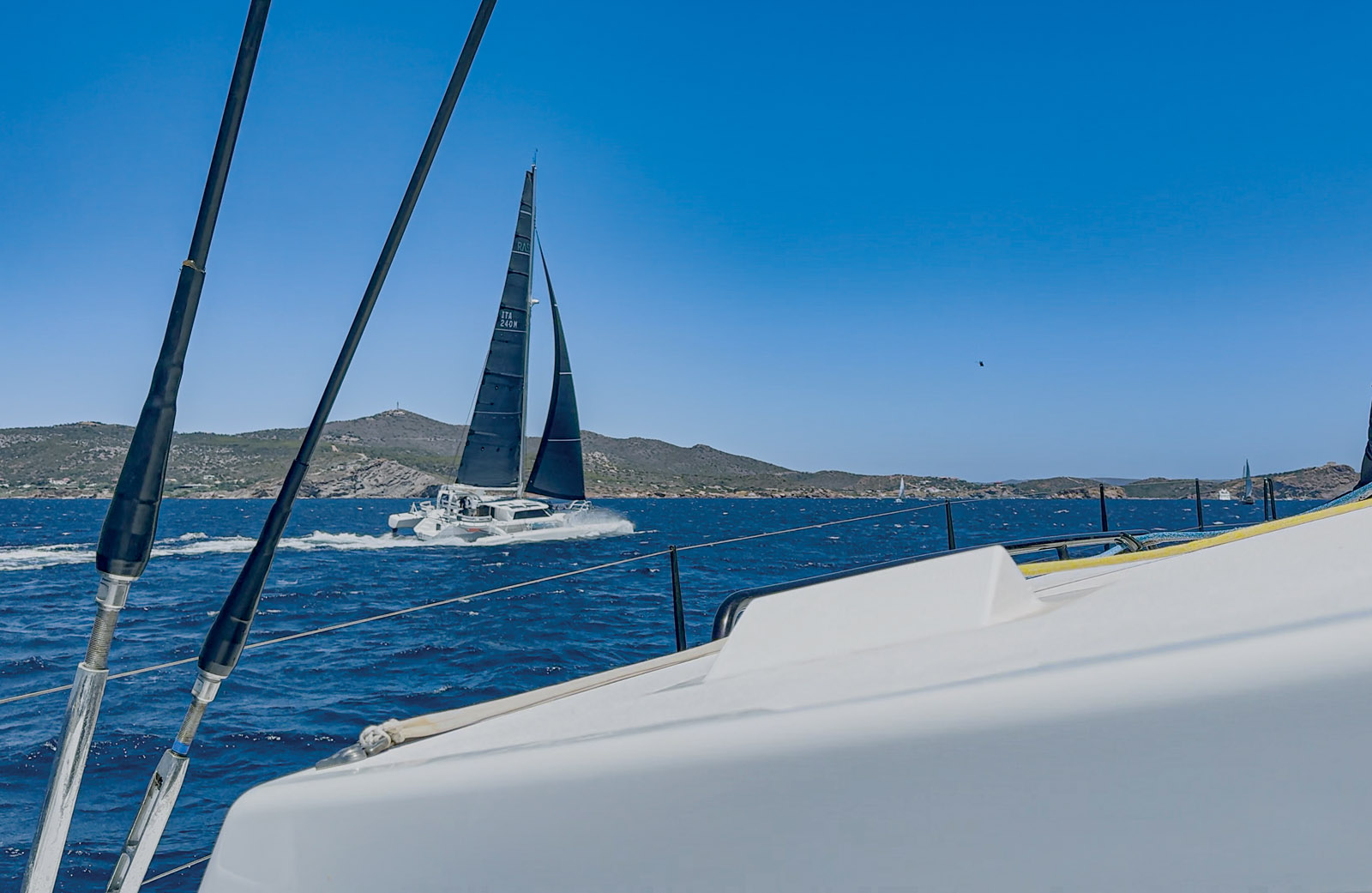
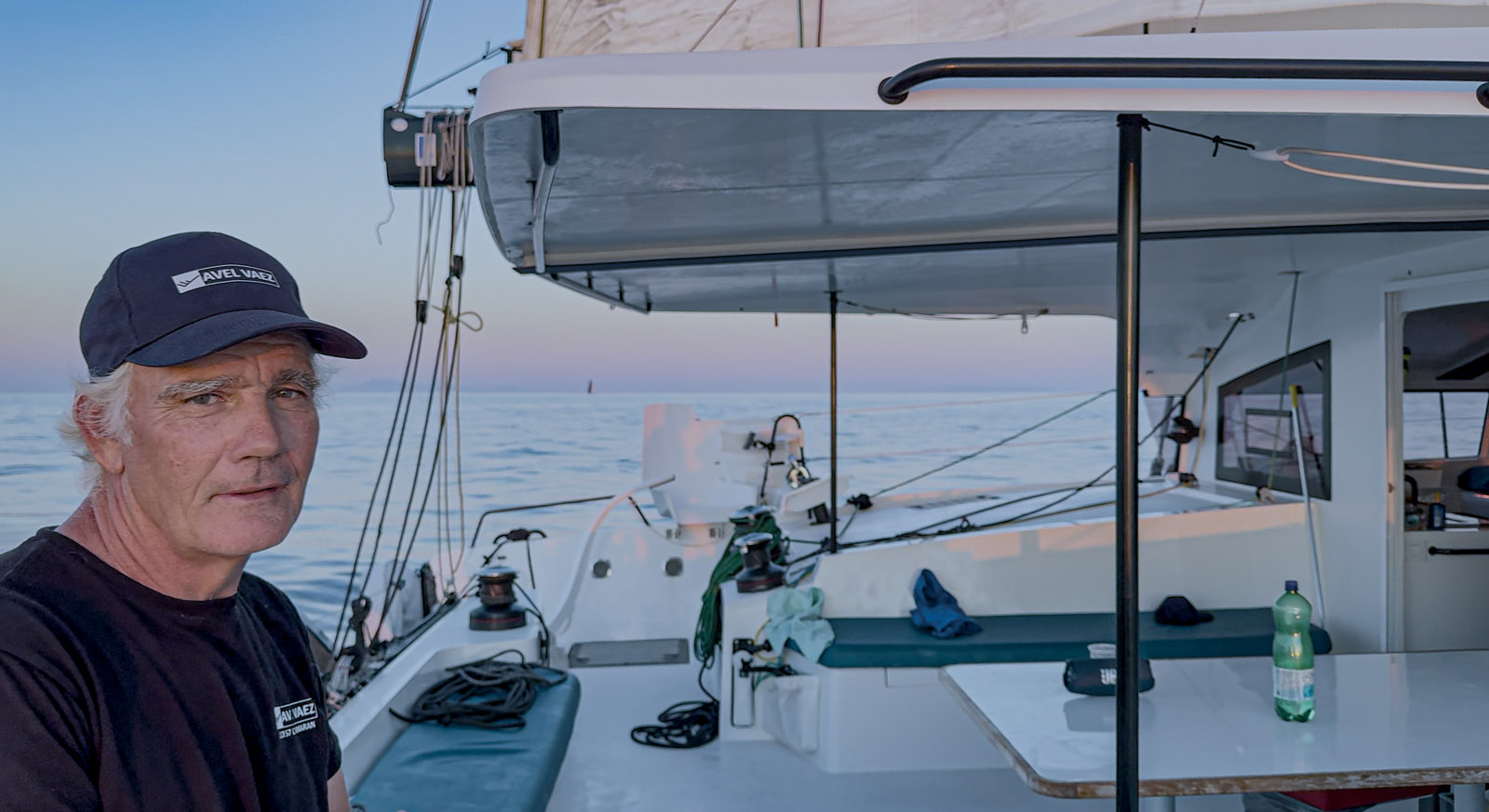
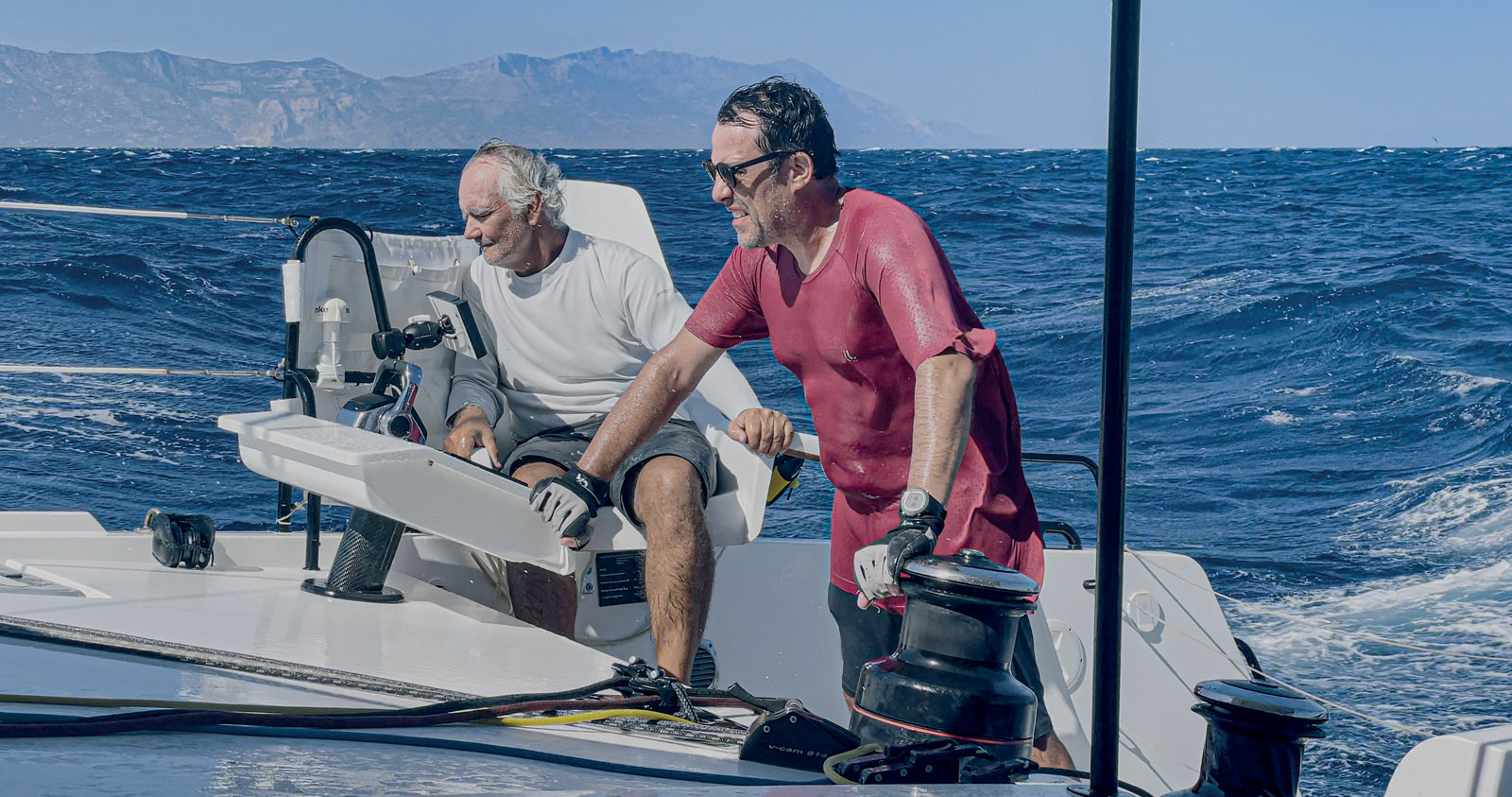
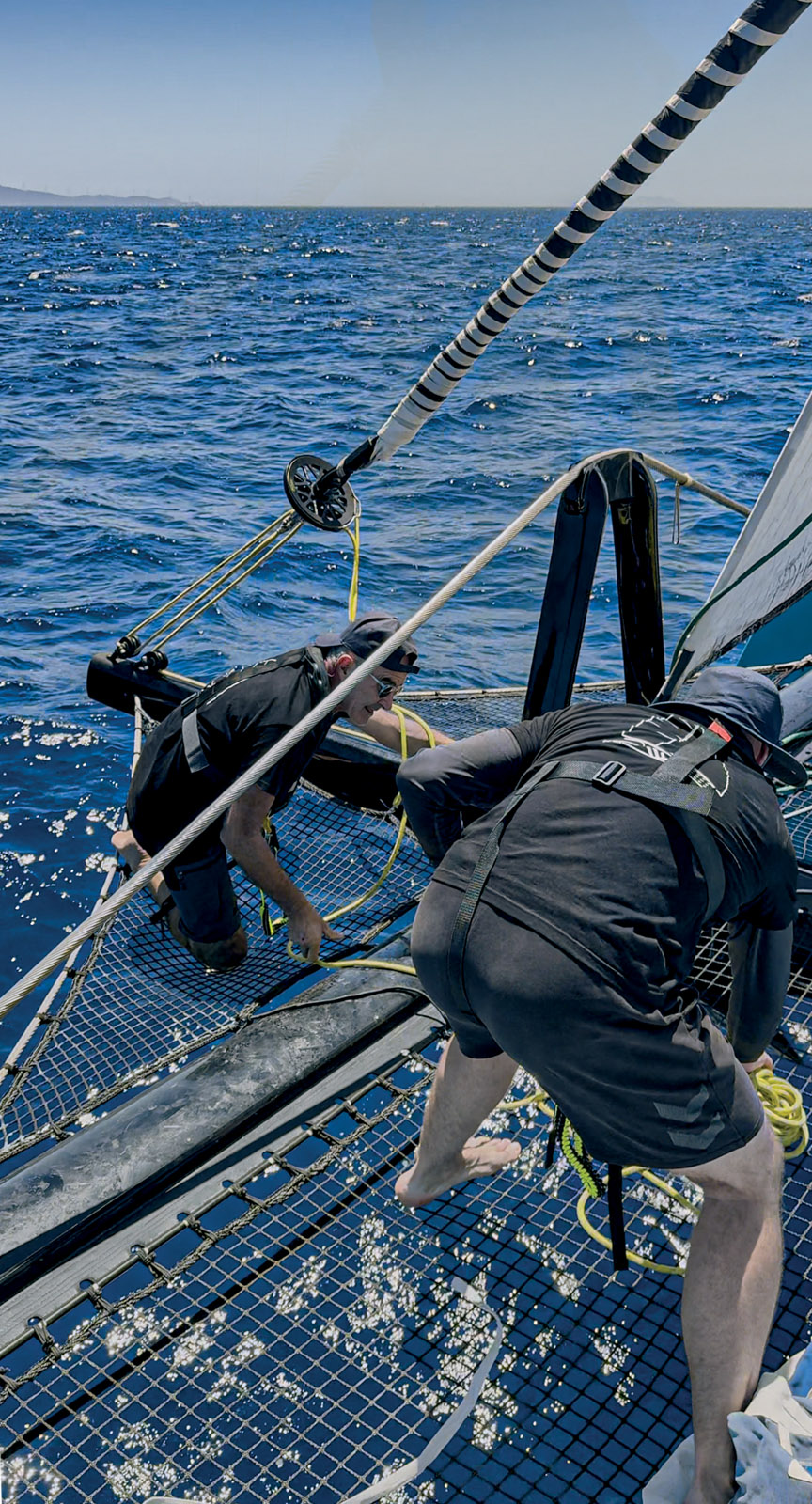


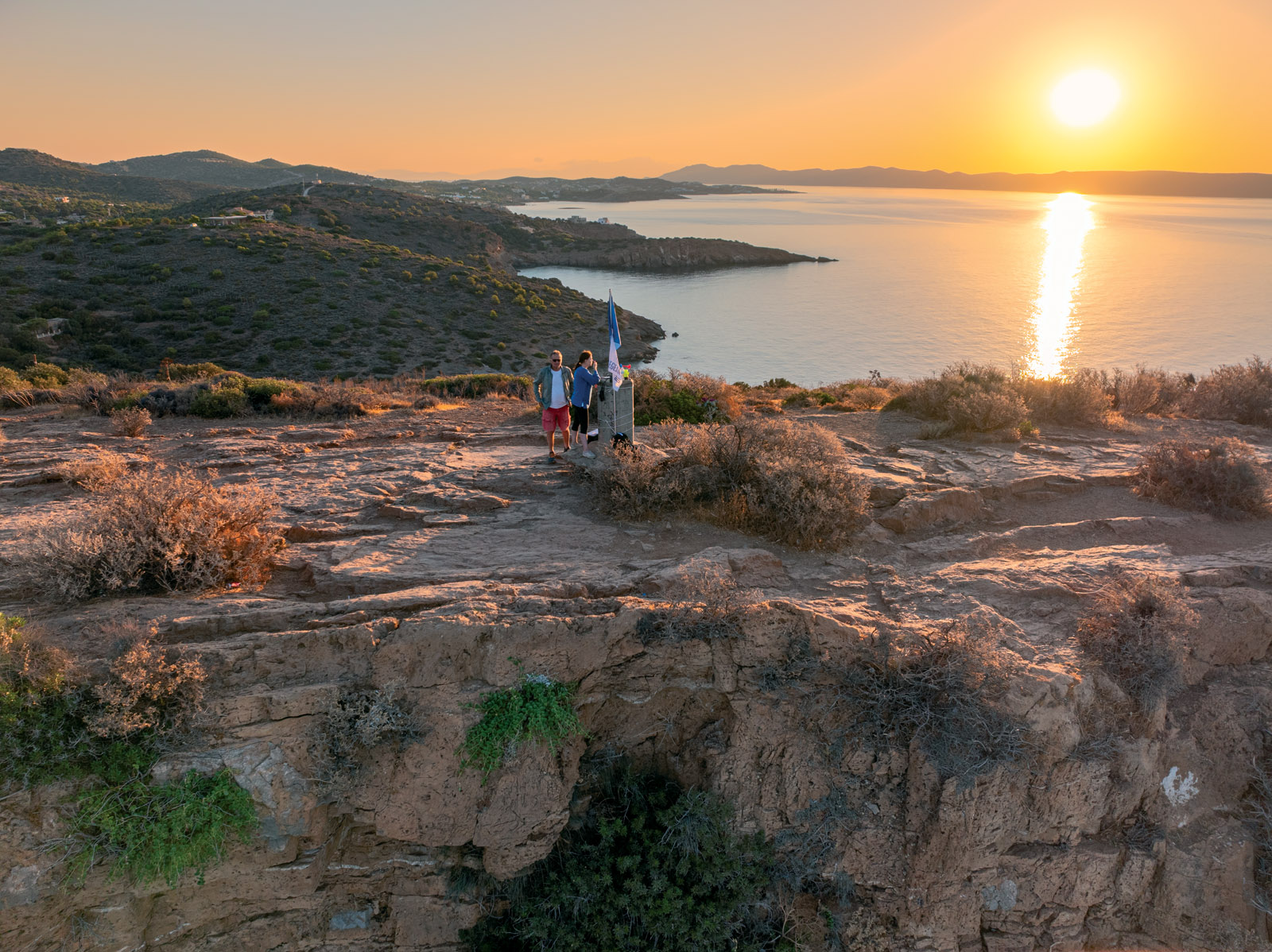
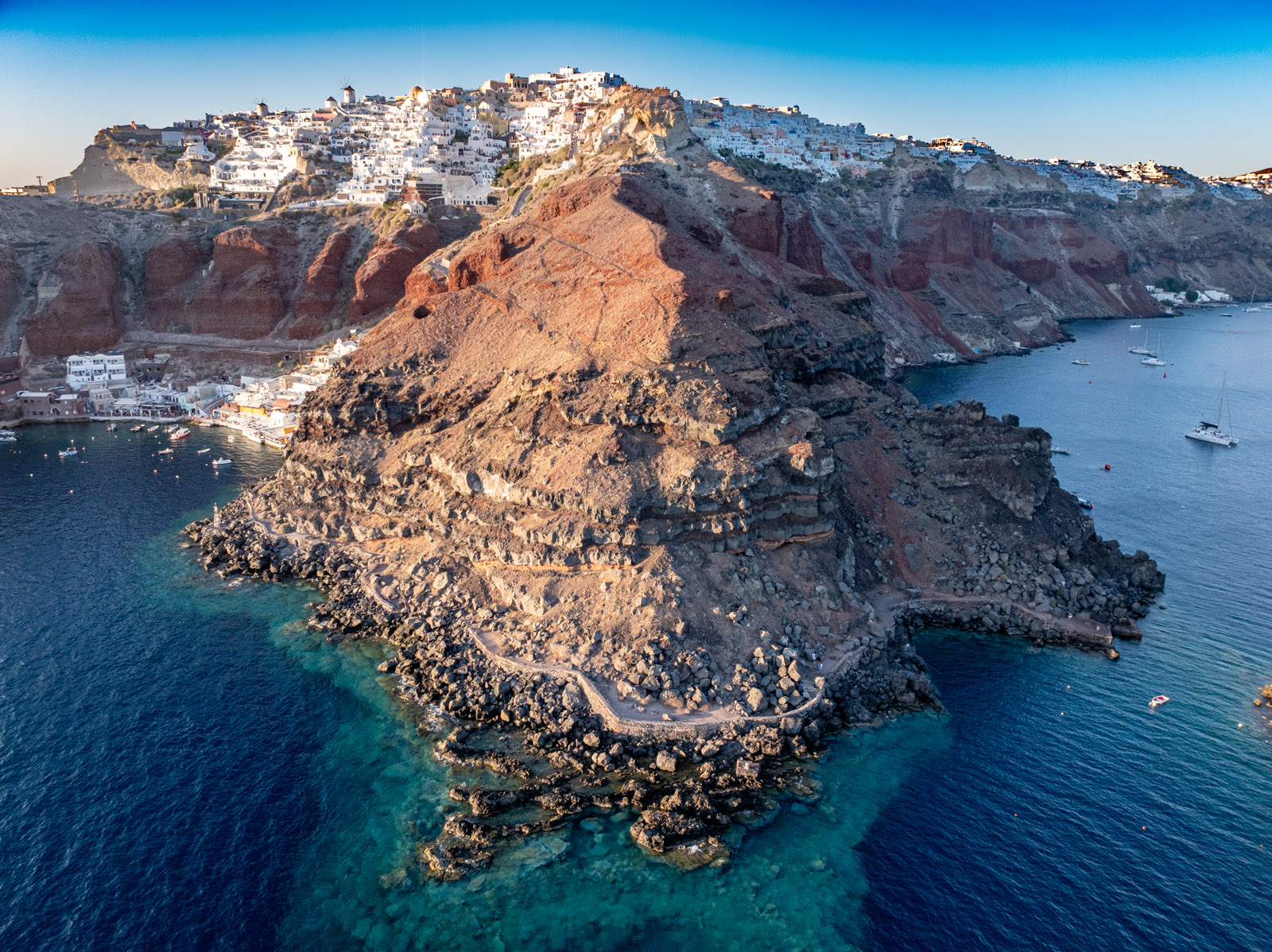
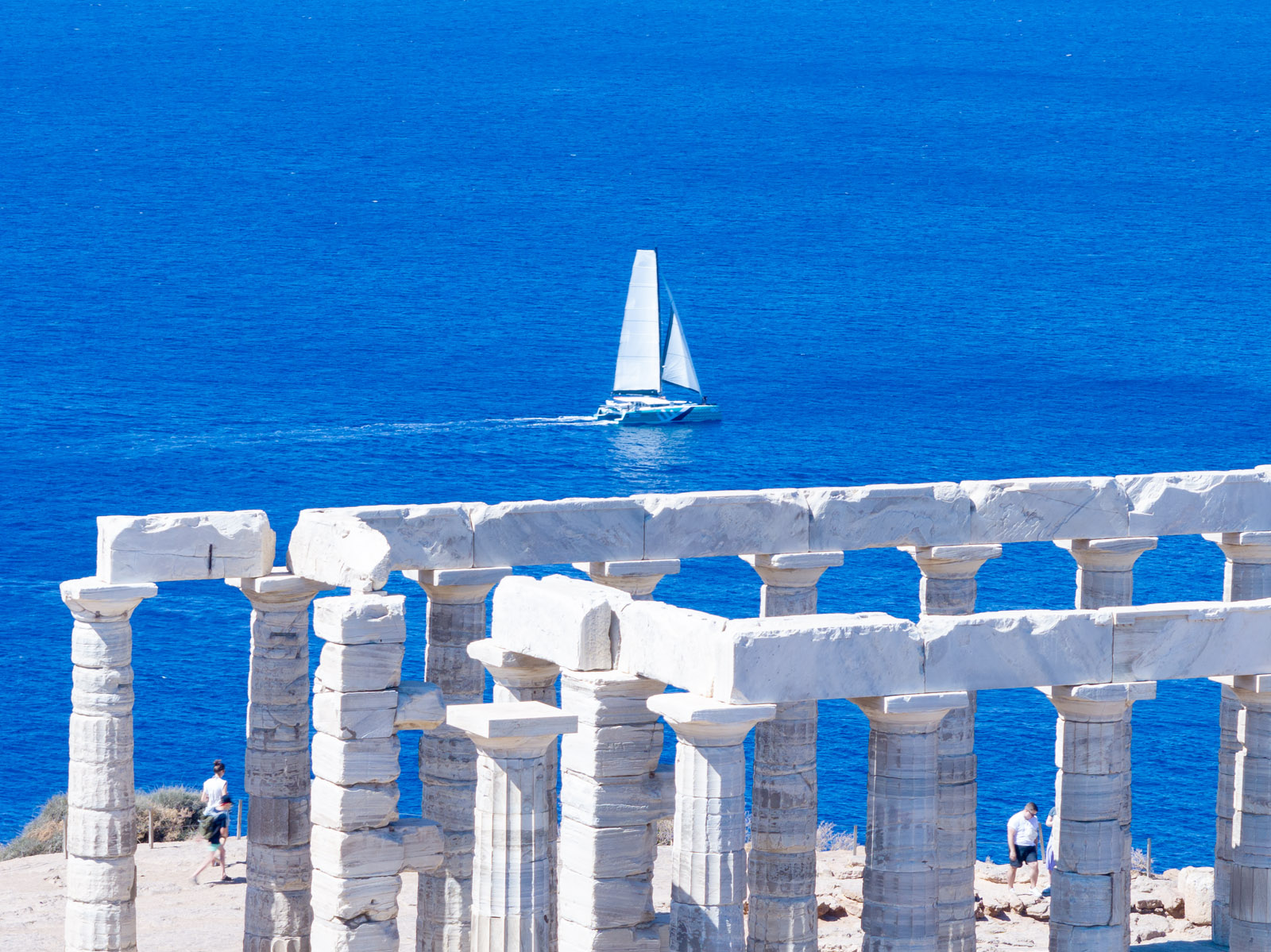
What readers think
Post a comment
No comments to show.